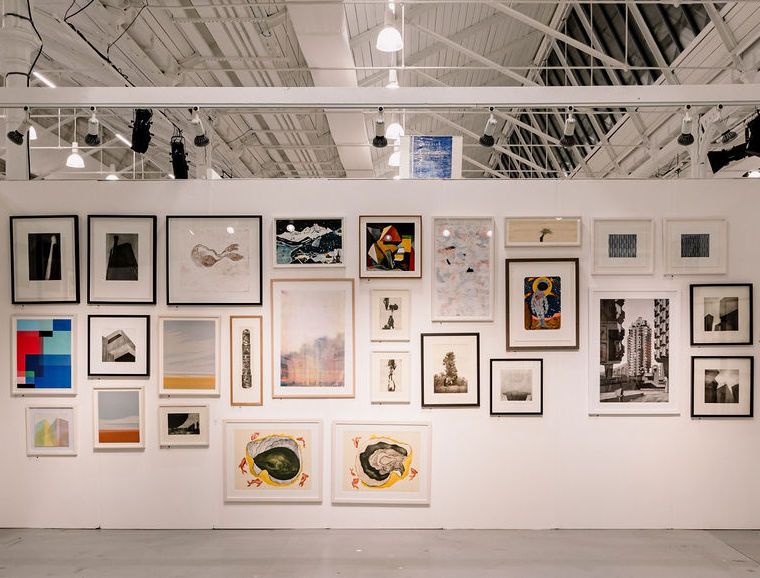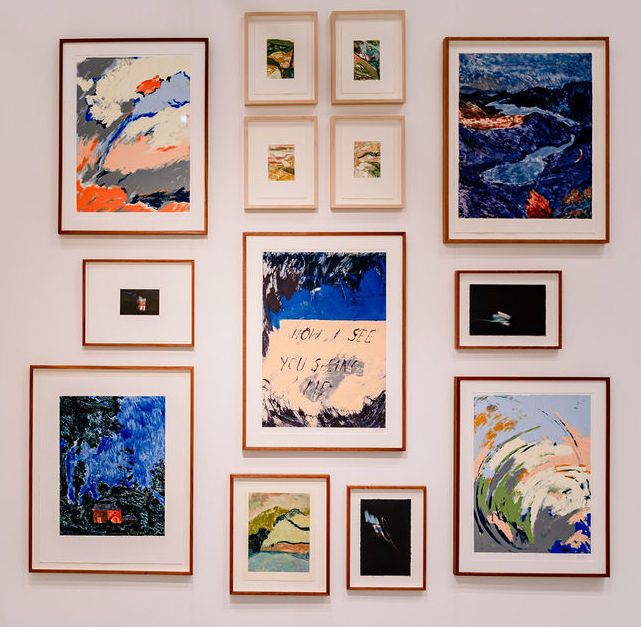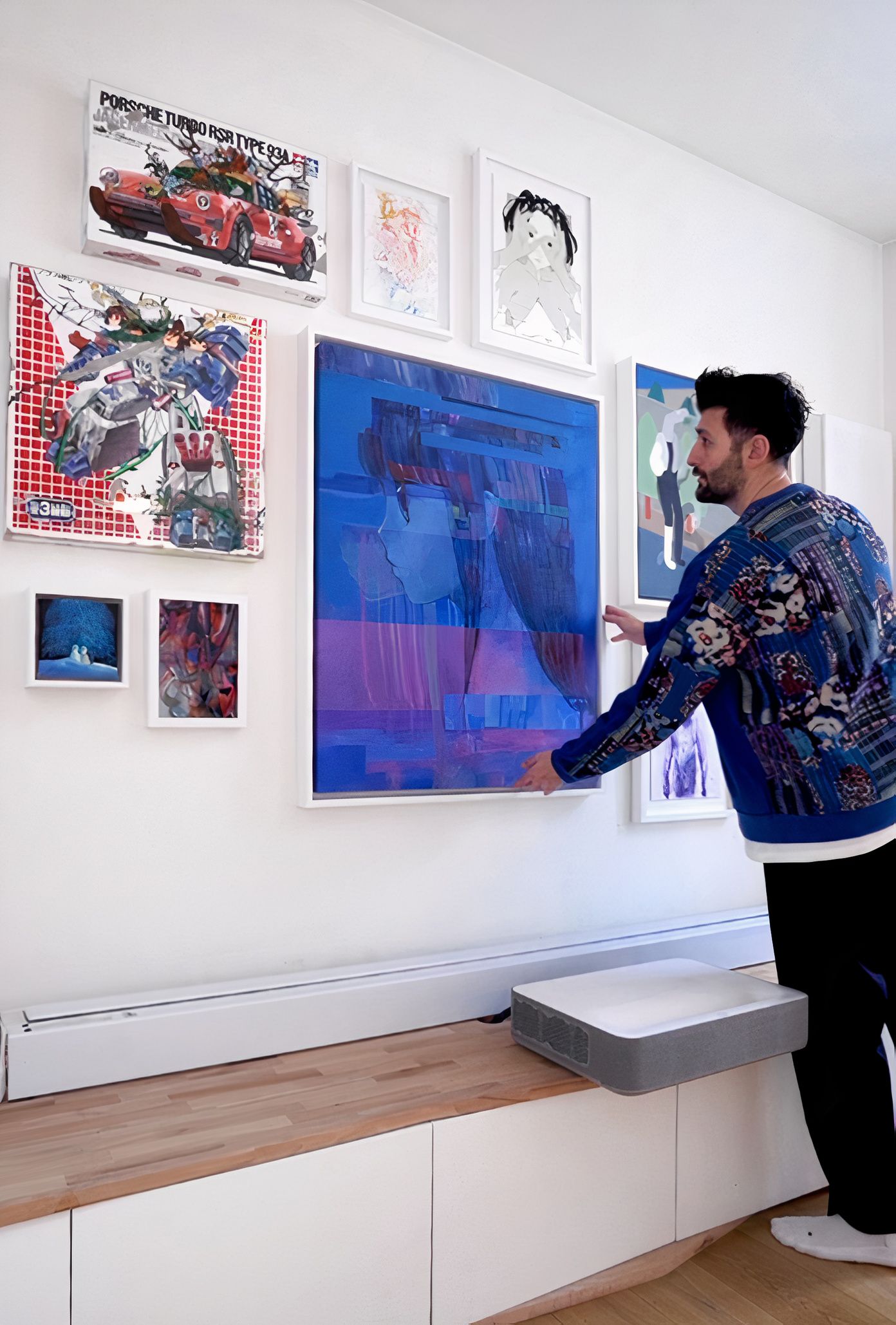
Hanging Artwork

The Ultimate Guide to Hanging Artwork
Hanging artwork on a wall is a great way to create a space that reflects your personal expression and artistic taste. You can create a captivating visual focal point with a single print or craft a mesmerising gallery by curating a collection on your walls.
What do I need to hang an art print?
Select the Right Art: Choose art prints that complement the room's style, colour scheme, and ambiance. Consider the size, theme, and mood of the prints in relation to the available wall space.
Gather Necessary Tools: Tools that may help you hang an artwork include a hammer, nails or picture hanging hooks, measuring tape, a level, a pencil, and masking tape (optional for creating a layout on the wall).
How do I hang an art print?
Measure and Plan: Measure the wall space and the size of your prints. Determine the layout you desire. Consider the eye level; typically, art should be hung with the centre at eye level.
Mark the Wall: Use a pencil to mark where the top or centre of each art piece will be placed. You can use masking tape to create an outline of where the art will go to visualise the arrangement before making holes in the wall.
Placement and Spacing: Maintain balance and symmetry between the prints, keeping an even distance between them if hanging multiple pieces. For a single large print, ensure it's centred and levelled.
 Courtesy of Woolwich Contemporary Print Fair
Courtesy of Woolwich Contemporary Print FairHammering and Hanging: Use nails or picture hanging hooks appropriate for the weight of the frame. Follow the pencil marks or guidelines created with masking tape to hang the prints. Use a level to ensure the art is straight.
Adjustment: Step back and check for any necessary adjustments. Make sure everything is levelled and aligned properly. If the art feels too high or low, adjust accordingly.
Consider Lighting: Lighting plays a crucial role in showcasing art. Ensure there's appropriate lighting to accentuate the prints. Avoid direct sunlight to prevent damage.
Grouping and Arrangement (for multiple prints): Experiment with different arrangements before drilling holes. Consider a grid layout, salon-style hanging, or a mix of sizes and orientations.
Additional Tips:
Use Picture Hanging Tools: Some tools, like picture hanging systems or adhesive strips, can help in adjusting art placement without leaving holes in the wall.
Frame Selection: Choose frames that complement the artwork and the room's decor. A well-matched frame can enhance the overall presentation.
Remember, hanging art is also a personal expression. Don't be afraid to get creative and adjust based on what looks best to you in your space!
 Courtesy of Woolwich Contemporary Print Fair
Courtesy of Woolwich Contemporary Print FairWhat should I avoid when hanging artwork?
There are some common mistakes to avoid to ensure your artwork is displayed effectively.
Wrong Height: Avoid hanging artwork either too high or too low. A general rule is to hang the center of the artwork at eye level, which is around 57 to 60 inches from the floor. However, you may need to adjust this based on the average eye level of the people in your household.
Poor Lighting: Ensure that the artwork is well-lit. Avoid placing artwork in direct sunlight, as it can cause fading over time. Use proper lighting fixtures to highlight the artwork and create a visually appealing display.
Ignoring the Room's Scale: Consider the size of the wall and the furniture in the room when choosing the size of the artwork. A small piece might get lost on a large wall, while an oversized piece might overwhelm a smaller space.
Mismatched Style and Theme: Make sure the artwork complements the style and theme of the room. A mismatched piece can disrupt the overall harmony of the space.
Uneven Spacing: Maintain consistent spacing between multiple pieces of art. Whether you're creating a gallery wall or hanging a few pieces together, even spacing helps create a balanced look.
 Photo courtesy of Jo Yana
Photo courtesy of Jo YanaUsing Incorrect Hardware: Use appropriate hanging hardware for the weight and size of the artwork. Improperly secured artwork can fall and cause damage to the piece or pose a safety risk.
Crowding the Wall: Avoid overcrowding a wall with too many pieces of art. Leave some breathing space around each piece to allow them to stand out individually.
Neglecting the Viewing Distance: Consider the optimal viewing distance for the type of artwork you have. Large pieces may require more space for viewers to step back and appreciate them fully.
Ignoring Symmetry and Balance: Aim for balance in your arrangement. Whether you're hanging a single piece or a group of artworks, strive for a visually pleasing balance in terms of size, colour, and arrangement.
By being mindful of these factors, you can create an art display that enhances the overall aesthetics of your space.
For tips on framing your artwork, head to our Guide to Framing Artwork.
